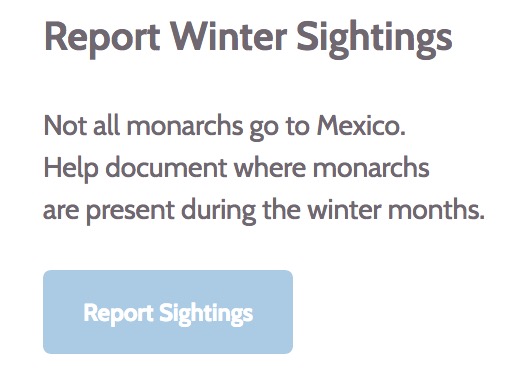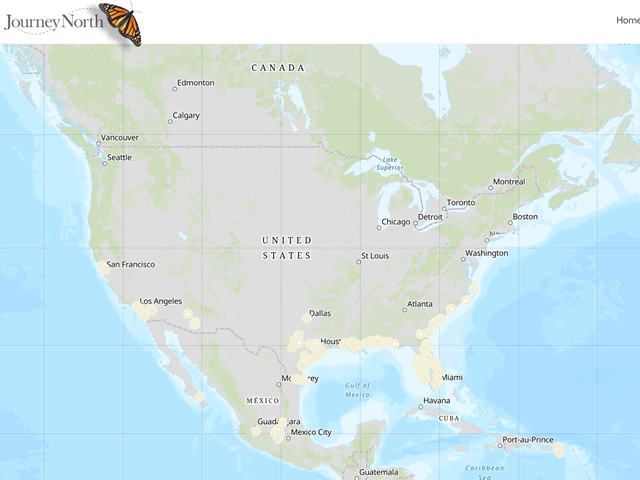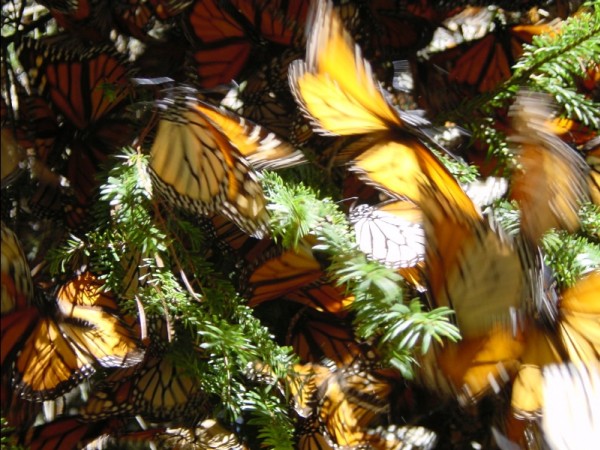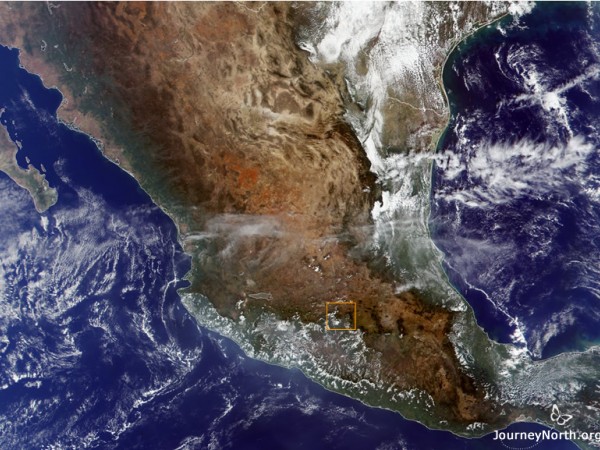A Surprise Letter From Estela Romero Reporting From Monarch Sanctuaries in Mexico
Peak Viewing: Sierra Chincua, El Rosario and Cerro Pelón Monarch Butterfly Sanctuaries.
Dear Friends,
Welcome to peak butterfly viewing at the Sierra Chincua, El Rosario and Cerro Pelón Monarch Butterfly Sanctuaries in Central México. This past weekend, local communities greeted thousands of visitors to these three sanctuaries.
News From Sierra Chincua Sanctuary
A large mural painted by a local artist stands at the entrance to the Sierra Chincua Sanctuary. The mural depicts the life cycle of Monarchs including their overwintering stage as well as a few aspects of life and traditions in Mexico. The Canadian, United States and Mexican flags can also be seen representing the three nations sharing responsibility of Monarchs habitat conservation.
Also standing at the entrance to the Sierra Chincua Sanctuary is the memorial to Dr. Lincoln P. Brower. This memorial provides information about his research and the legacy of his work. Indeed, this sanctuary was discovered by Dr. Brower in 1979.
During the first half of January, the density of Monarchs in these colonies became spectacular. Some days have been sunny and warm (15 to 20 Celsius); other days have been very cloudy and chilly (10-12 Celsius to 3- 5 Celsius).
The colony is located in a rather extended spot between El Zacatonal and El Tepozán and occupies an average of one hundred trees.
A few times, on the warm and very sunny days, the intensity of sunlight seemed to make the Monarch butterflies more active than desired. Monarchs are supposed to be mostly quiet during the overwintering period. Monarch that retain bright orange coloration on their wings and black coloration on their abdomens evidence excellent weather and temperature conditions at the Sanctuaries. However, there were some monarchs that have started to lose their bright colors while others have even shown torn wings.
Medium to large clusters of Monarchs hang from tree branches. Several tree trunks of the Oyamel trees are covered with Monarchs from the bottom of the tree to mid-height – but not much higher.
In Sierra Chincua, visitors can see how the colony extends downhill along the canyon, with the hillside protecting the Monarchs from the wind and optimizing the sunlight. This is ideal micro-climate conditions for the time being and until they decide to relocate.
“This is simply spiritual, very spiritual”, visitors whisper to each other. Visitors remain silent as they contemplate and listen to the sound of Monarchs wings beating gently in the wind.
News From El Rosario Sanctuary
The El Rosario Sanctuary receives more visitors than the Sierra Chincua Sanctuary. There is a lively atmosphere at the Sanctuary entrance with a distinctive colorful facade and waving flags, its beautiful video-room with Monarchs’ wings brightly patterning the walls, and the abundant restaurant choices and souvenir stands for visitors to shop and recreate. These features make this Sanctuary a majestic destination for visitors from all over the world.
The entrance fee at both colonies is 50 pesos/$2.00). Climbing up to the colony, either on horse (cost: ~150 pesos/$7.5) or by foot brings you closer to the colony. There is much beauty to be seen in the flora and fauna of these Sanctuaries, in addition to the Monarch butterflies.
Monarch roost in clusters 40-50 meters high in Oyamel trees where a variety of hummingbirds, bees, and birds can also be viewed. There is an abundance of wildflowers supplying pollen and nectar, despite of the rather dry conditions that the whole area presents.
Located at only some 100 meters from Llano de los Conejos and Los Letreros, the colony looks extraordinarily dense –perhaps even double the population size than found in Sierra Chincua Sanctuary.
The colonies in Sierra Chincua and El Rosario Sanctuaries are truly ancestral miracles of nature. Let’s continue following these Monarchs before they leave Mexico.
Estela Romero, Angangueo, Michoacán, México
Journey North





